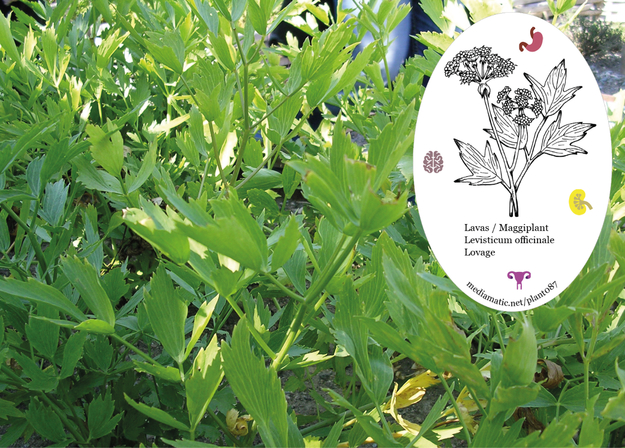Lovage is a warming and tonic herb for the digestive and respiratory systems. It is used primarily in the treatment of indigestion, poor appetite, wind, colic and bronchitis. The roots, leaves and fruits are antispasmodic, aromatic, carminative, diaphoretic, digestive, diuretic, mildly expectorant and stimulant. They are used internally in the treatment of disordered stomachs, especially cases of colic and flatulence in children, kidney stones, cystitis, painful menstruation and slow labour. Externally, the root is used in the treatment of sore throats and aphthous ulcers. The roots of plants 3 years old can be harvested in early spring or in the autumn and are used fresh or dried. The leaves are harvested before the plant comes into flower and either distilled for their oil or dried for later use. The leaves, either eaten in salads or dried and infused as a tea, have been used as an emmenagogue. The essential oil from the seeds is used by aromatherapists to remove freckles and spots from the face. The German Commission E Monographs, a therapeutic guide to herbal medicine, approve Levisticum officinale - Lovage for infections of the urinary tract, kidney and bladder stones. Source: https://pfaf.org/
Lovage
Levisticum officinale
Find more about this plant on Wikipedia.
